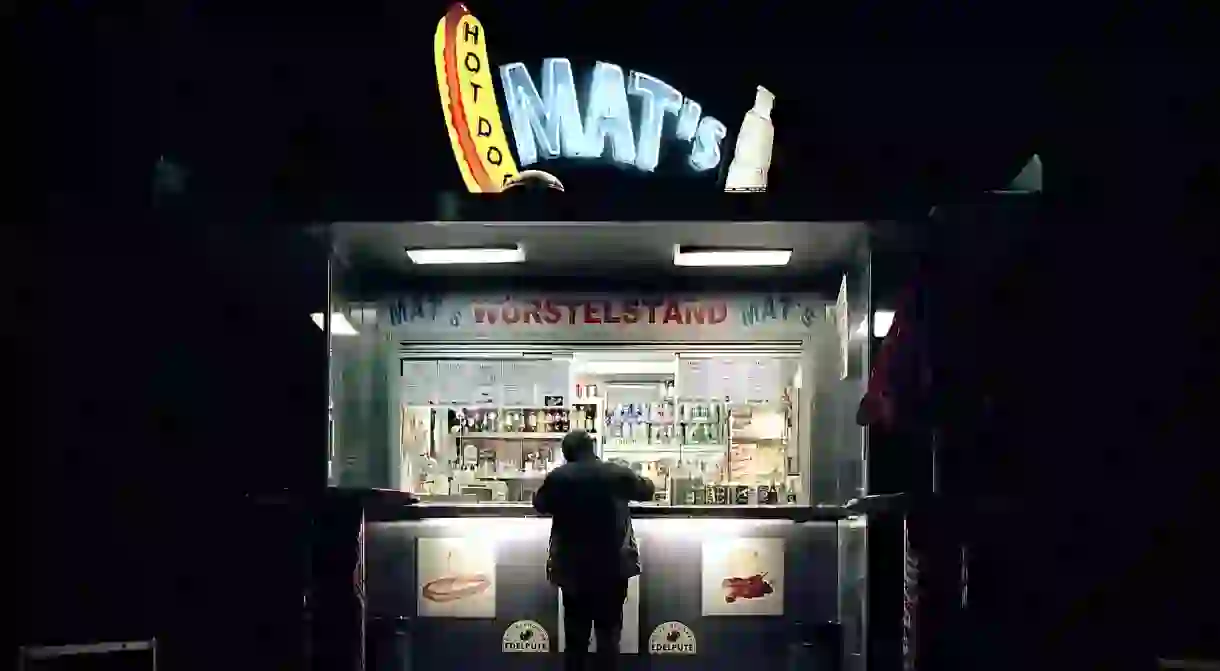'Pus Springs': The Story Behind Photographer Stefan Fuertbauer’s 'Eiterquellen' Series

Dotted on street corners across the Austrian capital, Vienna’s würstelstands (hot dog stands) have been so absorbed into the city’s landscape that they’re hardly given a glance by those who pass them every day. But Austrian photographer Stefan Fuertbauer has put the vintage diners centre stage in his striking photography series, Eiterquellen.
Walk past Bitzinger Würstelstand, near the famous Albertina art museum, in Vienna and even on the coldest Viennese day a crowded queue is likely to have gathered. Sausages have been sold on Vienna’s streets for hundreds of years, and today’s American diner-style würstelstands continue the tradition. Photographer Stefan Fuertbauer, who grew up in the Austrian countryside and moved to Vienna 20 years ago, was drawn to the modern diners’ “strong visual appearance”, and has been photographing them for a number of years. Culture Trip spoke to Fuertbauer to learn more about his Eiterquellen series.

Sausages have been popular in Vienna since the end of the Napoleonic wars, and kiosks selling them were first introduced to the city during the Austrian-Hungarian empire (1870–1914). At this time, many injured servicemen were in need of a regular living, so the Viennese municipality invited them to sell sausages from mobile vans. It was in the 1960s that the municipality required that the kiosks be made stationary, which is why these fixed snack bars – or würstelstands – have stood resplendent as a slice of ’60s functional style in Vienna’s streets ever since.

Despite the growth of other fast food corporations, the würstelstands have stood the test of time, as Fuertbauer says: “The diners do very well recently. I’ve seen a decline in fast (junk) food restaurants and a surge of high-quality street food, as you’d probably call würstel diners nowadays.”

And though the food they serve has hardly changed – hot dogs, wieners (frankfurters), fried sausages – the stands have adapted to meet the needs and tastes of modern Vienna. “There are of course still those that just serve standard dishes at a fair price, but you’ll also find more and more diners offering products of immense quality, organic meat and bread, self-grown ingredients and craft beer specialities.” Today, people from all walks of life can be found queueing at Vienna’s würstel diners for a typically Viennese on-the-go snack.

The würstelstands’ clean lines and utilitarian appearance contrasts with the city centre’s classical, Imperial-era architecture – brightly lit, the kiosks stand out in high relief from the grander structures that surround them. “You won’t find two stands that look alike, they all appear to be inspired by ’60s fluorescent illuminated American drive-ins,” says Fuertbauer. This contrast is highlighted in Fuertbauer’s Eiterquellen series, which depicts the diners alone; “isolated both in the sense of appearance and location as well as in resisting against globally operating fast-food chains.”

Although Fuertbauer states that his inspiration comes from people, his würstelstands series places the focus on the static diners themselves, rather than the characters behind them. He started photographing stands he “found visually attractive” but, like many of his projects, there wasn’t a long-term plan in place. “My love for the city and interest in the people of Vienna meant it suddenly made sense to dig a little deeper.” As a result, the project developed naturally. “It’s definitely a pulse-triggered project, nothing I planned for conceptually.”

The name itself is somewhat tongue-in-cheek: Eiterquellen literally means ‘Pus Springs’ and was inspired by the word eitrige (pus-filled), which describes a Käsekrainer, an Austrian pork sausage stuffed with cheese that oozes out when grilled. Fuertbauer plays on the unappetising descriptions often used for food in Vienna – Käsekrainers are typically served with mustard, the Viennese term that also means “barf”.

Fuertbauer acknowledges that he has used a few tricks of the trade in editing the images to emphasise the stands’ isolation. “Some of the diners indeed stand completely alone and for those not, I’ve retouched any disturbing background in post-production. I’ve removed walls and streets for the sake of emphasising the glowing luminosity of the stands.”

Carefully editing the photos to create a harmonious series – “I can’t even remember how many hours I eventually spent scanning negatives, working out backgrounds and grading colours to match the entire series” – Fuertbauer’s images emphasise both the stands’ similarities and their differences.

Fuertbauer points out that by depicting the stands as seemingly remote, his intention was not to “express emotions like loneliness or abandonment”, but instead, he appears to highlight their artificiality. Metallic, brightly lit and American-style, the diners stand out from their – as Fuertbauer describes central Vienna – “ancient surroundings”.














